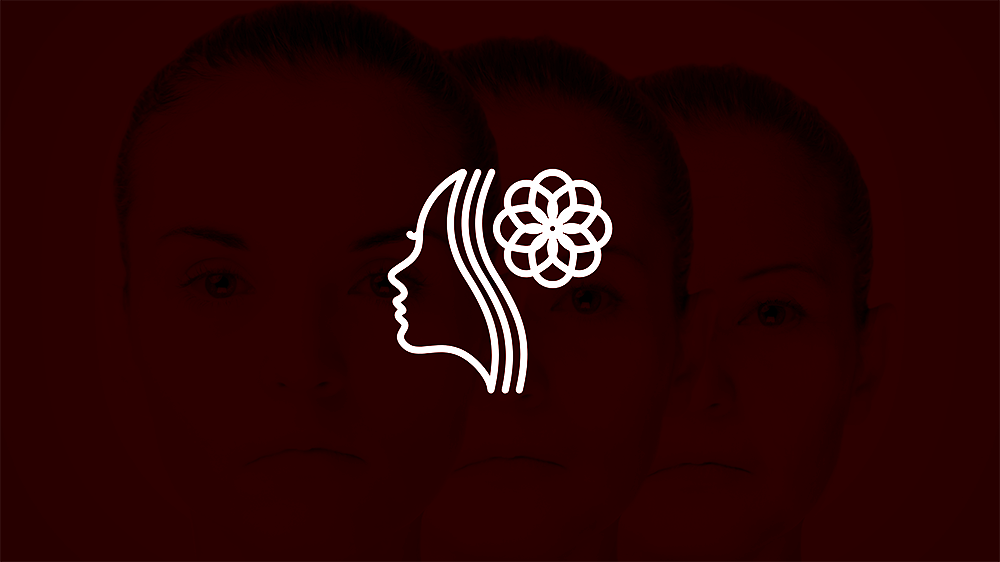If you’re one of the millions of people who suffer from chronic congestion, sinusitis, and nasal inflammation, you’re probably familiar with the unpleasant side effects of headaches and difficulty breathing.
You may have tried over the counter and prescription medicines like antibiotics, decongestants, or nasal sprays - and you know that while they provide temporary relief, they don’t do anything to resolve the underlying condition.
Red light therapy for nasal and sinus recovery is fast becoming a popular solution that is non-invasive and drug-free. Not only does it treat symptoms, but improves nasal health at the cellular level.
If you’re already on board with this, check out the BIOMAX Series red light therapy panels for more information.
But, if you aren’t familiar with the topic, we also encourage you to read on to discover a bit more about how red light therapy can help with nasal and sinus recovery, which type of device is preferable, and why.

Understanding Sinus and Nasal Inflammation: Causes and Challenges
Sinus problems arise when inflammation or blockages make it difficult for mucus to drain out of the nasal passages. Causes of inflammation and blockages can include infections, environmental pollutants, allergies, nasal polyps, or a deviated septum.
This can result in breathing difficulties and result in a long list of negative effects including headaches, chronic congestion, postnasal drip, pressure in the sinus cavities, and even nosebleeds.
Persistent irritation in the sinuses can lead to long-term infections, so it’s important to get to the root of the problem. However, many traditional approaches do little more than offer short-term relief.
Some come with side effects, such as nasal steroids that have been linked to an increased risk of infection and chronic nosebleeds.
And, these remedies may not be effective long-term. Antibiotics, for example, are not effective in treating viral infections and the body can become resistant to them. Decongestants, while effective short-term, may lead to rebound congestion. Long-term steroid use has been linked to liver problems, and may become less effective over time. Sinus surgery is often a last resort but may not address underlying inflammation.
Red light therapy is a drug- free, non-invasive treatment that works at the cellular level to decrease inflammation, improve nasal drainage, & promote healing. Unlike regular medicine, it does not use chemicals, and unlike surgery, it requires no recuperation time.
Red light therapy addresses health at the cellular level to help the body cope with whatever may be causing aggravation in the sinuses.
How Red Light Therapy Targets Sinus Congestion and Swelling
Treatment with red and near-infrared light has been shown to stimulate beneficial biological activity in the nasal tissues. The light absorbs through the skin to stimulate light-sensitive chromophores in the mitochondria.
The mitochondria are your cells’ ‘energy centers.’ Red and near infrared light stimulates the synthesis of ATP (cellular energy), which results in much healthier cells.
How can this help with sinus congestion and swelling?
Red and NIR light have been shown to improve the body’s immune function. Part of this is supporting the body in eliminating pathogens and irritants through mucus drainage.
While acute inflammation is part of the healing process, long-term it can cause prolonged swelling which can interfere with mucus drainage and lead to chronic nasal congestion.
Red light therapy, also known as photobiomodulation, reduces chronic inflammation in the body. Whether you have rhinitis (swelling in the nasal passages) or sinusitis (swelling in the sinuses), red light therapy can offer relief from stuffiness, sneezing, pain, and swelling.
Photobiomodulation Effects on Mucosal Tissue and Immune Response
Researchers have shown that chronic inflammation is at the heart of major diseases and health challenges. Reducing inflammation is where red light therapy can really make an impact.
This all-natural, noninvasive treatment has been shown to modulate pro-inflammatory cytokines in the treated area. As inflammation reduces, so does swelling of the mucosal tissue. This leads to better drainage as well as relief from pain and pressure.
The question then is, how can you get therapeutic light deep into the nasal passages and sinuses?
Intranasal Red Light Therapy Devices: Technology, Wavelengths, and Usage
One can find inexpensive intranasal red light therapy devices online, but these seldom yield good results.
There’s a colossal difference between an ordinary red lightbulb and a red light therapy device that emits therapeutic wavelengths.
Most intranasal red light therapy devices don’t reveal what wavelengths they use. They also often don’t say whether their lights are actually LEDs calibrated to a specific wavelength or just ordinary LEDs with a red coating. Consumers might be surprised by what sometimes passes for a red light therapy device.
There are no therapeutic benefits to exposing the body to the rays emitted by an ordinary red lightbulb.
LEDs that are not calibrated to a specific wavelength are simply not useful for any therapeutic application.
Issues with Intranasal Red Light Therapy Devices
Below are some of the common issues with intranasal red light therapy devices.
Nasal passages aren’t a straight line, so a weak light source won’t affect nasal passages further back toward the throat, and none in the sinus cavities above or below the eyes.
Battery powered devices operate at full power only at the beginning. Light output may dim over time with use.
Intranasal devices require mouth breathing, which can introduce even more pathogens into the body.
Intranasal devices also can’t be used to treat anything except nasal issues, unlike the incredible full-body treatment flexibility one gets with red light therapy panels.
Other more expensive intranasal devices use blue light, which kills bacteria on the surface of the skin, but does not treat the underlying inflammation that causes congestion.
More powerful intranasal devices use infrared light that has been shown to prevent and support healing from COVID.
However, because of their size, these intranasal devices deliver only a fraction of the light energy that you can get from a full sized LED panel. More light energy output = more light photons are absorbing into the tissues. It’s impossible to get much power from handheld devices.
Optimize Treatment with The Right Red Light Therapy Wavelengths
Using the correct wavelengths for red light therapy treatment makes all the difference in the world. Let’s briefly look into how using specific wavelengths makes a difference.
The red 630 nm & 660 nm wavelengths reduce surface-level inflammation and nasal swelling, also known as edema.The 810 nm and 830 nm wavelengths penetrate deeper into sinus tissues, enhancing circulation and immunological response.
The 940 nm wavelengths reduce post-surgical inflammation & promote recuperation from sinus treatments.
Near infrared wavelengths (800-850 nm) absorb much deeper into your sinus tissues (even through dense cartilage). NIR wavelengths boost your body’s immune response, reduce chronic inflammation, and promote cell health.

Clinical Research on Red Light Therapy for Rhinitis and Sinusitis
If intranasal devices don’t really work, is there any proof that red light therapy can treat rhinitis and sinusitis? Let’s look into some of the clinical research to see the impact it’s had on patients under professional care.
A 2011 study observed the effects on NIR light therapy on chronic rhinosinusitis. 23 patients with symptomatic CRS. One group received treatment with 940nm wavelengths. The other group was treated with 810nm light as well as a topical photo-activated agent.
One week after treatment, both types of treatment showed a positive effect on CRS. Most importantly, the effect was sustained for at least two months with minimal side effects, and the patients did not require antibiotics or steroids.
Having a red light therapy device at home allows for daily treatment, such that anyone with nasal issues can maintain a therapeutic practice easily and without interruption or excessive cost.
In 2022, researchers used 830nm NIR to treat fourteen patients with chronic rhinosinusitis. The study participants received five successive treatments with a sham laser, and then two days later, five successive sessions via NIR laser. The treatment was not given intranasally, but through the cheeks and forehead to treat the maxillary and frontal sinuses.
The real laser treatment showed significant 34% improvements in symptoms. The placebo laser resulted in a 5% improvement, which could also be due to the natural healing process. Patients experienced improved breathing and reduced nasal congestion after treatment with NIR light.
Safety, Contraindications, and Best Practices for Sinus Relief
As always, we recommend consulting with a healthcare provider before starting red light therapy for sinus relief, especially if the symptoms are chronic or severe, although red light therapy treatment is safe, so there is not much downside involved in giving it a try.
If you experience mild, temporary side effects like skin redness and tightness, we recommend moving further from the device during treatment to reduce its intensity or shortening your treatment time.
Red light therapy users may also combine it with others like saline nasal rinses or doctor-prescribed medications.
Simply sit a few inches from the device, and let the NIR light energy absorb through the skin into your sinus cavities and nasal passages. You can also tilt your head upward slightly so that some light enters the nostrils.
Red Light Therapy with the BIOMAX Series
A red light therapy device that will be effective for nasal and sinus health should use red and NIR wavelengths. It must be powerful enough to deliver enough light to the sinuses and nasal tissues.
When you’re comparing devices, look for irradiance which is measured in mw/cm2: the higher the number, the more light energy is being absorbed by your tissues.
The revolutionary new BIOMAX devices deliver the right wavelengths, light energy output, versatility, and value. You can use these devices to treat other conditions at the same time as nasal and sinus recovery, including anti-aging, hair regrowth, and much more including targeted treatments and full-body conditions.
Also be sure to check out the new BIOMAX Pro red light therapy panels. They are 50% more powerful for faster results, now with advanced wavelength customization for targeted therapeutic benefits.
Discover more uses for red light therapy with BIOMAX Pro devices in the Learning Center for more information.

Academic References
Bindod, H. V., Hatwar, P. R., Bakal, R. L., & Dafe, V. N. (2025). Illuminating Healing: A Comprehensive Review of Blue and Redlight Therapy Applications and Efficacy. Asian Journal of Pharmaceutical Research and Development, 13(1), 204-210.
Krespi YP, Kizhner V. Phototherapy for chronic rhinosinusitis. Lasers Surg Med. 2011 Mar;43(3):187-91. doi: 10.1002/lsm.21042. Epub 2011 Feb 2. PMID: 21290392.
Libby, P., (2007). Inflammatory Mechanisms: the Molecular Basis of Inflammation and Disease, Nutrition Reviews, Volume 65, Issue suppl_3,, Pages S140–S146, https://doi.org/10.1111/j.1753-4887.2007.tb00352.x
Naghdi S, Ansari NN, Varedi M, Fathali M, Zarrin M, Kashi-Alashti M, HasanNia F. Use of low-level laser therapy for patients with chronic rhinosinusitis: a single-blind, sham-controlled clinical trial. Lasers Med Sci. 2022 Dec 20;38(1):5. doi: 10.1007/s10103-022-03684-z. PMID: 36538169.


